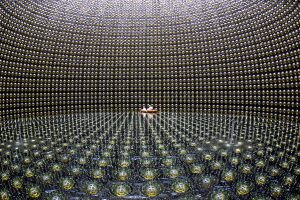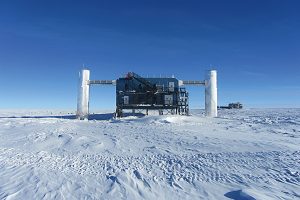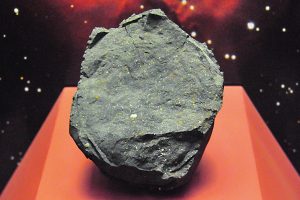Search
Kessler Syndrome refers to an avalanche-like phenomenon in which, from a critical density of objects, a collision with space junk produces more junk, which in turn causes more collisions.
Katherine Johnson was born on 26 August 1918 and was the first woman of NASA's Research Division to be credited as the author of a report.
Violent Universe, Mètode's latest issue, has had the collaboration of the Valencian artist Aurora Valero (Alboraia, 1940). With her powerful and colourful works, she offers her interpretation of the origin and creation of the universe. She explains on MètodeTV. [English language subtitles are available for this
The universe at large is dominated on the one hand side by gravity and on the other by weakly interacting particles. The identity of dark matter remains an unresolved mystery of the universe. Meanwhile neutrinos have matured from their status as ghost particles to distinctly visible messengers for some of the most intriguing astrophysical phenomena.
Els neutrins són partícules neutres que tan sols interactuen dèbilment, la qual cosa les converteix en poderoses fonts d’informació sobre els processos més energètics de l’univers, però es necessiten detectors de dimensions gegantines ubicats al fons del mar o davall el gel antàrtic per a poder detectar-los.
The gamma-ray radiation represents the most energetic «light» of the electromagnetic spectrum.
X-ray emission from cosmic sources indicates that these sources are heated to temperatures exceeding a million degrees. These observations greatly impacted our understanding of the physics governing the evolution of structures across the universe.
Understanding the nature of the main constituents of the universe is crucial to obtain a precise description of the way in which it reached its present state.
We see the sky and admire its regularity and stability, its apparent immutability. We have always done so; it does not come as a surprise, since humans have always been startled by any change in the sky, associating it with omens or the mood swings of gods. At that time, they might call these changes «new stars», even if they were, for example, a supernova explosion, as in the case of Tycho’s supernova in the sixteenth century.
Carbonaceous chondrite meteorites are carbon-containing fragments of primitive asteroids that have offered the only samples available to date giving insights into chemical evolution in laboratory analyses. Their study has revealed that abundant organic chemistry came to be in the Solar System ahead of terrestrial life and, by the input of these meteorites and comets, might have aided in the origin of our planet’s biochemistry.










